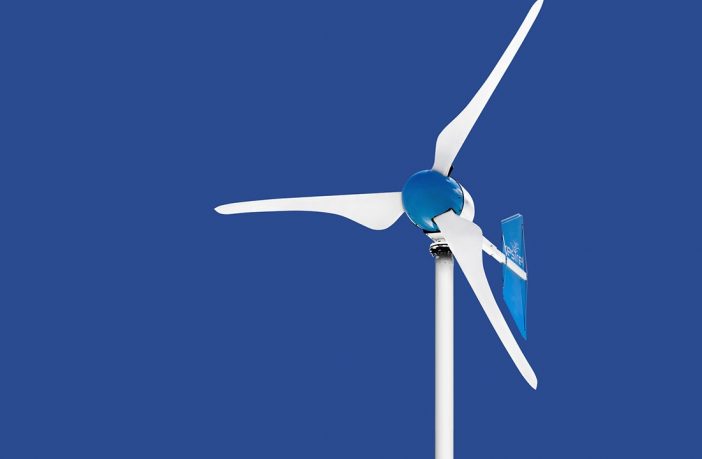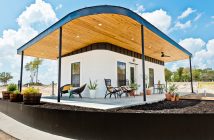- A homeowner can become more energy independent and reduce their energy bill by as much as 50% with the introduction of a wind turbine.
- Performance all depends on the wind factor at home site.
- Residential wind turbines can be bought off the shelf or online.
Rising electricity bills and load shedding are a reality in South Africa. Homeowners are increasingly looking at ways to produce their own power cost-effectively. A wind turbine is a viable option provided that there is consistent wind prevalent at the home site.
A residential wind turbine can operate efficiently with consistent wind measuring an average of 11 meters per second. Gusts of wind and inconsistent wind during stormy weather are not good for a residential wind turbine system. Be sure to specify a system with integrated automatic or manual braking to protect the device against turbulent gusts of wind. This can cause an unexpected voltage rise which can damage the system.
The cost savings for a residential wind turbine is based on the system and installation cost, the electricity consumption of the household and the amount of wind present at the home. Local wind turbine supplier Kestrel Renewable Energy can analyse your home’s wind average by simply supplying them with the coordinates of your home.
The average 3 bedroom home with modern electrical appliances uses about 1100 kWh per month. Assuming reasonable wind speeds throughout the year, a wind turbine of 5 kW to 15 kW power output would provide the required electricity. These are large turbines which can have 6 meter plus blade diameters.
Unlike solar PV systems, wind turbines operate 24/7 and can deliver power during nighttime hours. Most modern systems have hybrid plug-in points and can be combined with alternative power sources like solar PV and battery banks – offering a complete baseload system for those home-owners who want to go off-grid. A common problem with a hybrid wind turbine and battery banks system is overcharging. A built-in charge controller will eliminate this problem.
Residential turbines are exposed to the elements. Make sure you choose a system that is durable and weather resistant. Make sure it is manufactured with a weather resistant seal and UV guarding layer and properly installed by a qualified technician. A good quality system will start up at low wind speeds.
Environmental concerns are raised regarding bird and insect strikes plus noise. The chances of a bird strike are possible but studies show that the numbers are no different from birds flying into a glass door or window. The immediate environment will become used to the system in time. Modern turbines are intelligently designed to reduce decibels noise and come in many shapes and forms.
The mid-range Kestrel e400nb model is a 3.5 kW peak turbine. It has a mechanical brake and quality certified for the USA and the UK. In South Africa, the use of the mechanical brake is optional since the turbine is manufactured with an electrical break as a standard. Since the wind speed average in South Africa does not reach 8 meters per second, the mechanical brake will not be a requirement. This is a resultant saving.
The rotor diameter is 4 meters so one would need some good clearance from the mounting point (usually mounted on its own tower). It is suggested the turbine is not attached to the roof unless it is anchored to a reinforced concrete column. The system retails at around R160 000.00 Excluding Vat. The installation will cost around R 60 000 depending on geographical location, site complexity and hybrid integration required. Add batteries and you are looking at over R 195 000 Excluding Vat and installation.
Author: Bryan Groenendaal
















5 Comments
Good day I want a price on a 5 kw wind turbine that genarate 48v to put on my solar sistem to charge the batterys in raining weather. I am from Kinross mp.
I want to buy a 5kw. 48v wind turbine and accessaries. Shalom Pedro
I ALSO AM LOOKING FOR A 5KW. 48V. WIND TURBINE TO BUY . PLEASE SEND ME A QUOTATION. SHALOM PEDRO KELLERMAN
Interested in a Windmill to support my 8.5 kw inverter with 4 x 5.2kw batteries
Howdi Craig, we are digital publishers and do not supply wind turbines or install solar or wind systems.
Here is a link to important facts which must be considered when deciding to install a wind turbine in South Africa: https://www.greenbuildingafrica.co.za/viability-of-installing-a-wind-turbine-at-your-home/
I hope the info guides you well in your decision making. Thank you for your support.